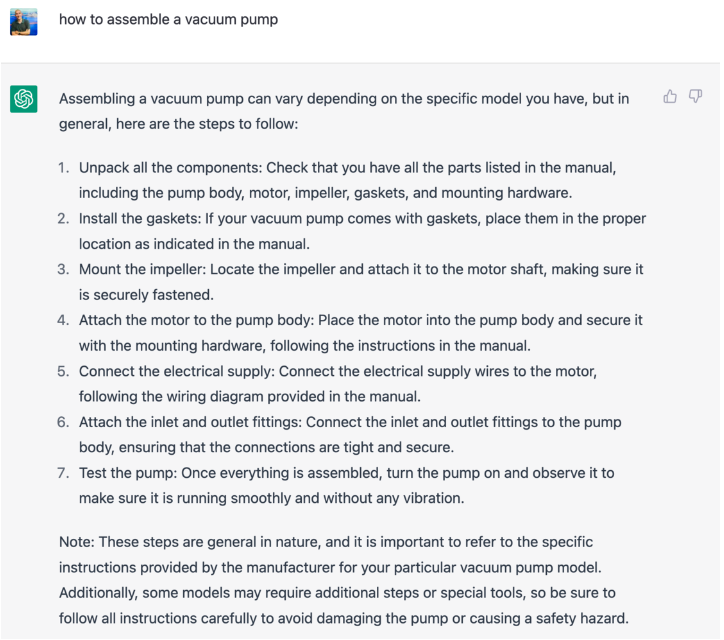Generative AI is probably the most eye-opening and promising innovation of the past 10 years.
I have been in the high-tech industry for over 35 years, lucky to be involved in deploying the Internet and creating the first websites. I’ve also worked in the search engine technology and machine learning space for 20 years, and I must admit that ChatGPT is one of the most impressive things I have ever seen. And it is a shock to everyone, not just tech nerds.
So much so that every company is probably currently trying to assess how this can transform, endanger, or foster its business. ‘What can we do with this? Will it transform the way we work? If we don’t act, will our competitors displace us?’ It’s an interesting moment, full of promises and opportunities. Isn’t it? Most corporate leaders seem to agree with 89% of companies predicting that Generative AI (GenAI) technology will create strategic market differentiation for their businesses.
As a software vendor specialized in knowledge management, search technology, and content services, you can imagine that we are deeply interested in the subject. Fluid Topics is the leading Content Delivery Platform, and we are evaluating how ChatGPT and other generative technologies will disrupt the way people search, read, and use technical documentation. Read on to discover how this technology will impact product knowledge teams and the tech doc lifecycle.
What is ChatGPT?
First things first, let’s make sure we’re all on the same page. ChatGPT is a language model designed to interact in a human-like, conversational way with users. Based on the user’s prompt, it generates various types of content in response: emails, poems, lines of code, articles, social media posts, ad copy, etc.
How Does ChatGPT Work?
I’ll start with a basic question that may come to the mind of a technical writer: Do you still need to write technical documentation, or can ChatGPT do it for you? Replying to this question requires understanding how generative technology works and what its real possibilities are.
Let’s keep it simple and non-techy. It works by reading a lot, to such an extent that it becomes able to write. This is much like a human being. The more you read (books, articles, …) the more you know. You learn more words, different grammatical forms and styles, and you acquire knowledge about more subjects. Hence, you become better at writing because you can reuse all that you’ve read after modeling it in your brain. But imagine that from an early age you have only read poetry from before the 20th century. Then, your writing style would be oriented to this time period, and your knowledge about quantum mechanics or cooking recipes would be null. In that case, if you were asked to write instructions on how to assemble a vacuum pump, you would be clueless.
Conversely, if you had read about pumps and various maintenance procedures for mechanical parts, you would certainly produce something, at least very generic. However, it probably would not be specific enough so that it could really guide a technician for a given model. And this is the key point. Unless you know not only about servicing complex machinery, but also about pumps and the characteristics of a specific model, there is no chance you can write something that is valuable and accurate. You would likely write something incomplete or wrong.
This is the same for ChatGPT. It is only able to generate text based on something it has read before. The difficult part is going from generic to specific without being wrong. Writing nicely does not mean being truthful. Yet being specific, complete, and accurate are critical for technical documentation.
The example below illustrates this point. We see that the generated reply is of little use.

How Will ChatGPT Impact the Role of Technical Writers?
So, whether it is for writing product knowledge or providing answers to specific questions, Generative AI on its own is not always that helpful. You still need to write the documentation, and if I ask a question to ChatGPT (assuming it has read the manual you have written), the only thing that the AI can do to be sure it’s right, would be to regurgitate the documentation. Any change to the original text could be at risk of introducing wrong information —called AI hallucinations —or missing critical pieces. Hence, we are back to square one: you need to read the documentation as it has been written and validated.
Therefore, ChatGPT won’t disrupt tech doc creation immediately. For now, technical writers will continue to produce product knowledge. Still, we see options to leverage GenAI technology in a transformative way.
Benefits of ChatGPT for Technical Writing
While ChatGPT may not completely disrupt the product knowledge production process, there are still ways that writers can leverage this technology to be more efficient. ChatGPT has the power to upgrade the technical documentation workflow, bringing positive benefits to companies and users alike.
- Fast-tracking content production: Product knowledge teams can quickly brainstorm ideas, summarize technical research, and produce content outlines for articles, user guides, manuals, and more. As a result, they can get to the actual writing process faster.
- Expanding the author options: GenAI allows new contributors like subject-matter experts (SMEs) to create production-grade content without having specialized writing skills. SMEs can dump their raw knowledge into an authoring tool. Then ChatGPT can optimize the sentence structure, make the text more concise, and edit the content for clarity.
- Translating at lower costs: Optimal translation can be machine-assisted using specifically trained systems for the world’s most common languages. ChatGPT, however, can be used for on-demand translation in less common languages.
- Ensuring consistent content styles: ChatGPT-based tools can review your documentation to analyze tone, check for plagiarism, and simplify any jargon-heavy text sections. By detecting and changing inconsistencies, it ensures all content is fluid and easy for any user to read.
The advantages of integrating these GenAI tools into the technical writing process are clear. In fact, professionals that are already using AI in their content processes report writing 59% more business documents each hour.
Benefits of ChatGPT for Content Delivery
Similarly, Generative AI is transforming how users find and read documentation. This application will be even more visible and impactful than that of ChatGPT on producing technical documentation. I see two main content delivery use cases that maximize the value of this technology.
- Revamping the reading experience: LLMs are good at transforming existing content. By harnessing different types of transformations, you can enhance the user reading experience. Modifying the content could be as simple as asking the LLM to summarize or translate information, or as complex as information extraction. For example, a field technician may ask, “show me the parts and tools involved in this 40-page procedure so that I can prepare my toolbox”. Developers on the other hand, might prompt the LLM to “rewrite this code example provided in Python into Rust”.
- Introducing a new type of search: LLMs are re-defining how we search. How? The obvious use case that comes to mind is the ability to ask a question in natural language. But who wants to type a question in 20 words when three keywords are enough? Still, from chatbots to problem description analysis and voice-driven interactions, ChatGPT and LLMs will enable new ways to find information. Rather than simply providing content links as search results, these new forms of search provide users with directly actionable replies.
Limitations of Generative AI for Technical Documentation
Yet, despite these benefits, limitations remain. It’s important to consider the limits of this technology as you decide whether to integrate it into your content production.
- Wrong information: LLMs sometimes generate AI Hallucinations. These are inaccurate results not based on the input data. In other words, these are realistic answers that contain incorrect information.
- Not product specific: Tools that solely rely on LLMs are excellent at understanding and generating natural language. However, these tools don’t have access to product-specific data. As a result, their outputs or answers cannot explain the nuances of a specific company or product. Solutions such as RAG solve the issue.
- Data privacy and security: When using new AI tools with internal product knowledge, make sure you are aware of each tool’s data privacy policies. Without the necessary security considerations, you may risk sharing confidential information with external users.
Looking Ahead
What does the future hold for this technology after the hype passes and users have survived the initial issues and reality checks? Some will still doubt ChatGPT, while others will remain blindly convinced of its superiority. The dust will settle, and the technology will mature. It will find its place, thriving when employed in the right use cases, and become mainstream.
For the moment, teams are testing and deploying GenAI initiatives as custom projects with in-house development. However, we will see this technology become pervasive, embedded in tools and platforms. At least, I can say for sure that we will fully integrate Generative AI applications in Fluid Topics.
Editor’s Note: This post was originally published in February 2023. It has been completely edited and updated for accuracy and comprehensiveness.




